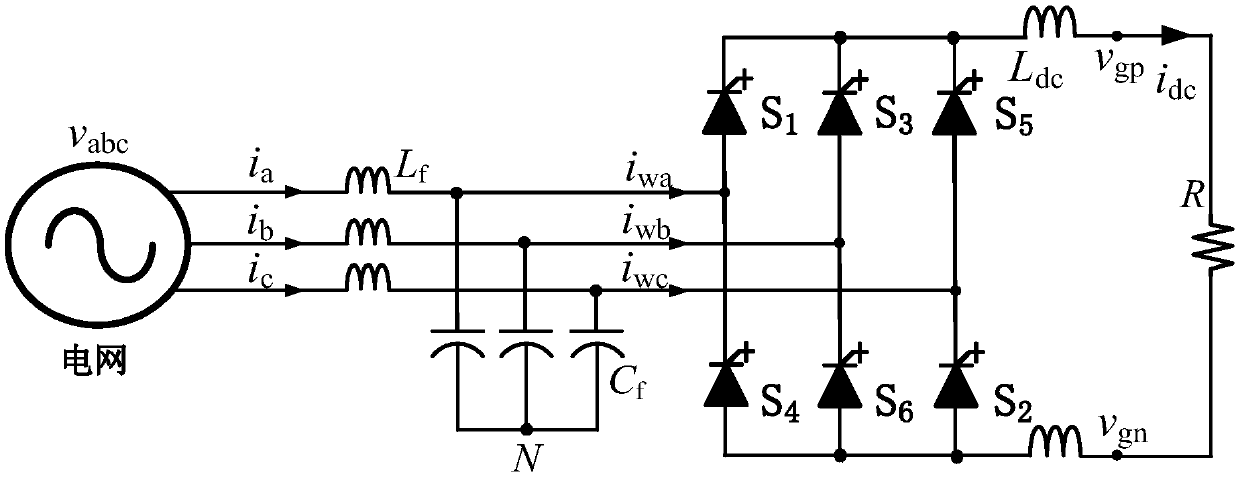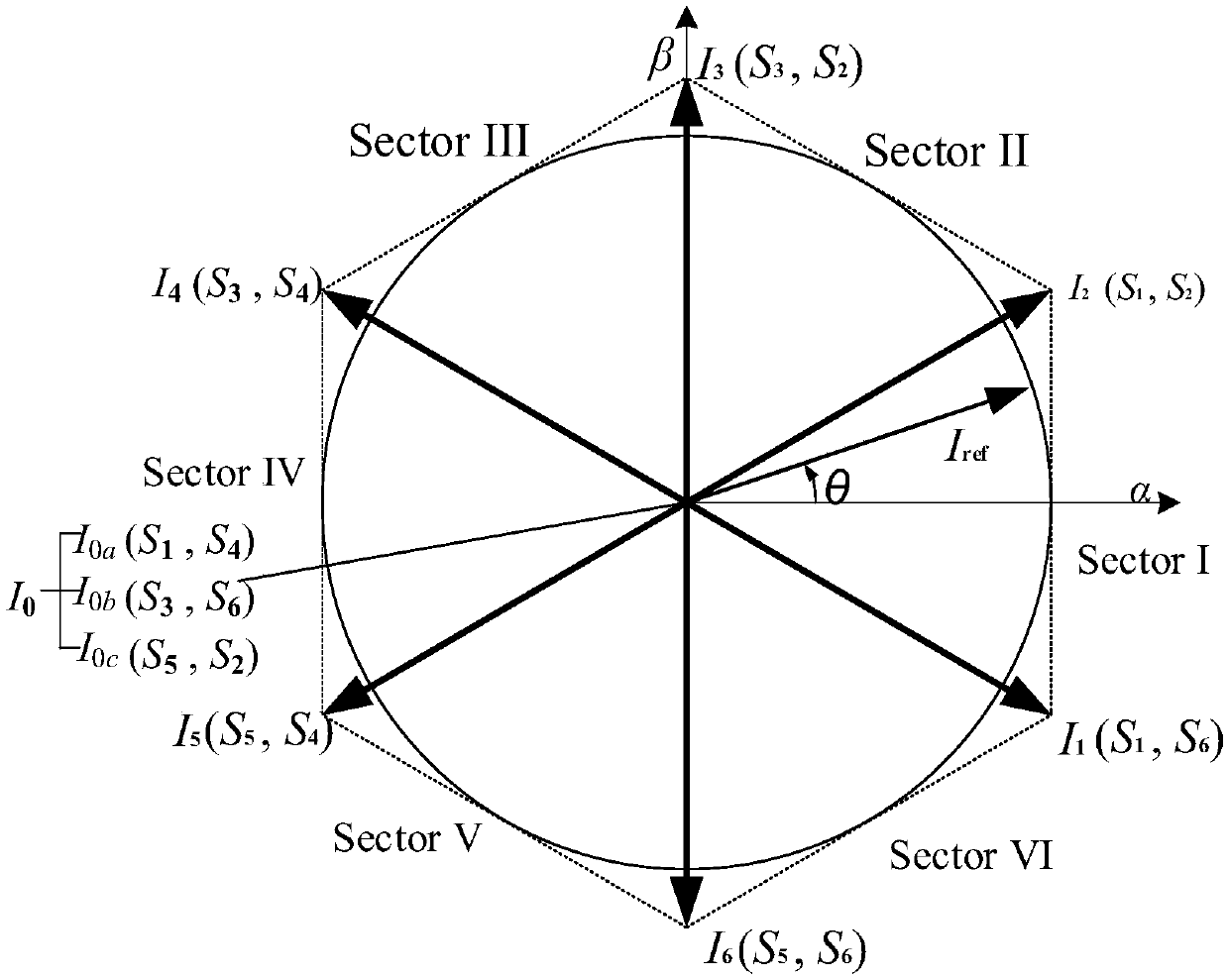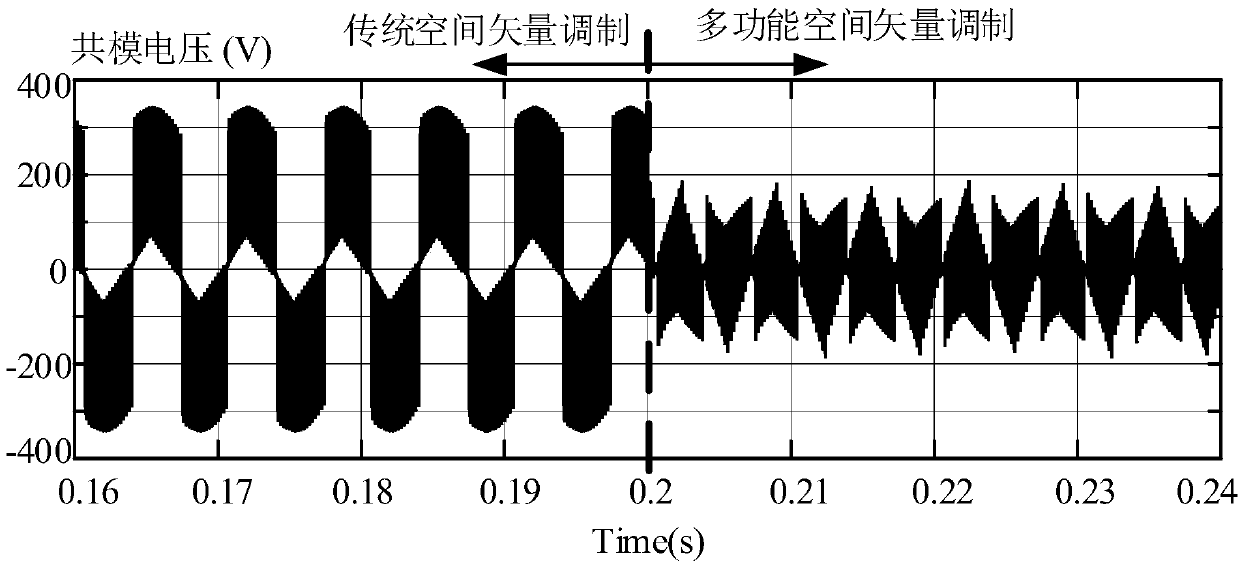Multifunctional space vector modulation method for current-source converter
A technology of space vector modulation and current source type, which is applied in the direction of converting AC power input to DC power output, electrical components, and high-efficiency power electronics conversion, and can solve unfavorable system insulation, high peak common-mode voltage of converters, grid nodes, etc. Leading power factor and other issues
- Summary
- Abstract
- Description
- Claims
- Application Information
AI Technical Summary
Problems solved by technology
Method used
Image
Examples
Embodiment Construction
[0037] The specific implementation of the current source converter-based multifunctional space vector modulation method of the present invention will be described below in conjunction with the accompanying drawings, so that those skilled in the art can better understand the present invention.
[0038] Taking the current source rectifier as an example, figure 1 It is a circuit diagram of a specific embodiment of the present invention. Such as figure 1 As shown, the current source rectifier uses a three-phase full-bridge topology as a rectifier circuit, and each full-bridge consists of six power switch tubes, which in this embodiment are IGBTs (Insulated Gate Bipolar Transistor, Insulated Gate Bipolar Transistor) with reverse diodes. type transistors).
[0039] The basic steps of the multifunctional space vector modulation method for the current source rectifier of the present invention are as follows:
[0040] Step 1: According to the constraints of the current source conver...
PUM
 Login to View More
Login to View More Abstract
Description
Claims
Application Information
 Login to View More
Login to View More - R&D
- Intellectual Property
- Life Sciences
- Materials
- Tech Scout
- Unparalleled Data Quality
- Higher Quality Content
- 60% Fewer Hallucinations
Browse by: Latest US Patents, China's latest patents, Technical Efficacy Thesaurus, Application Domain, Technology Topic, Popular Technical Reports.
© 2025 PatSnap. All rights reserved.Legal|Privacy policy|Modern Slavery Act Transparency Statement|Sitemap|About US| Contact US: help@patsnap.com



